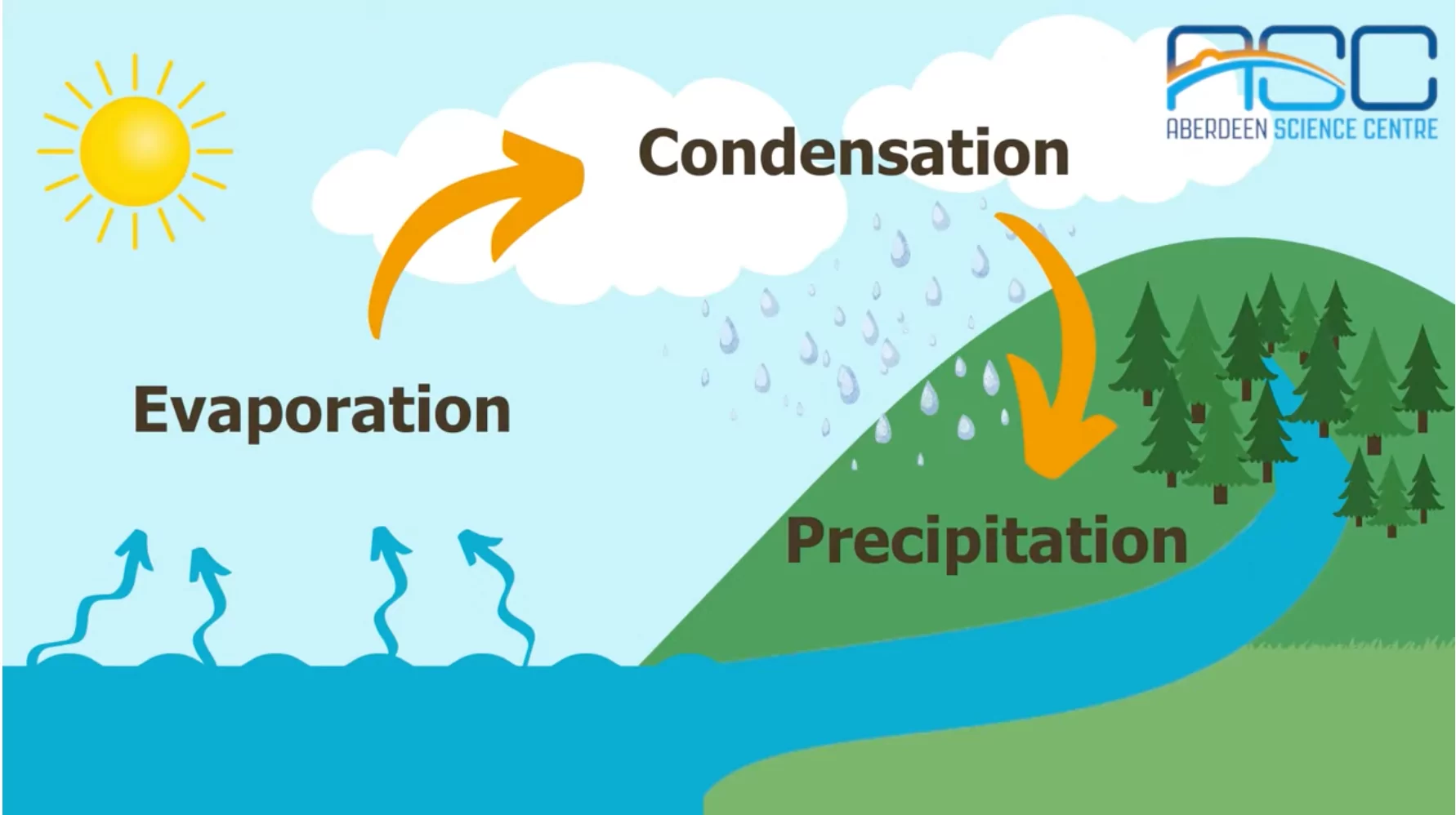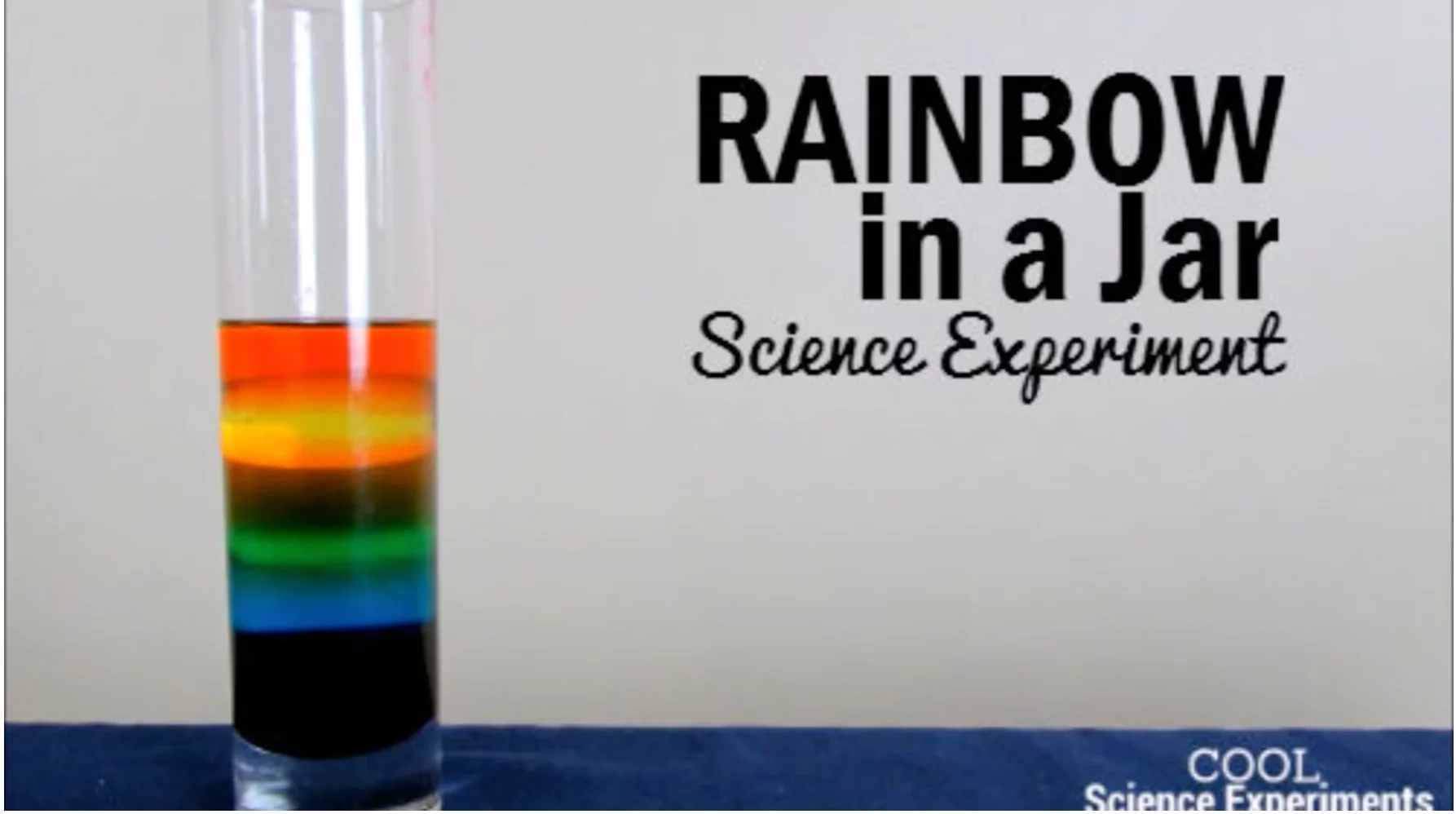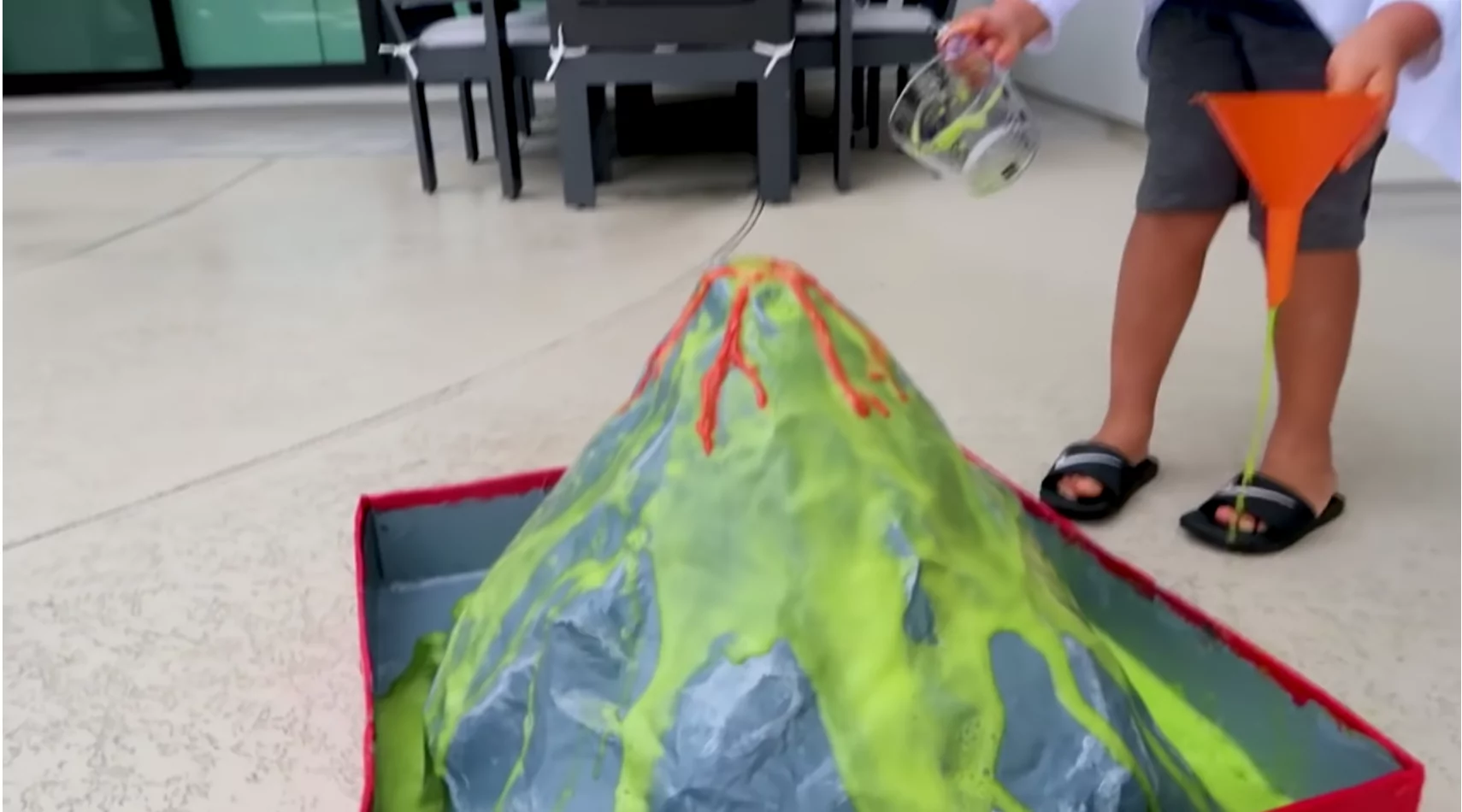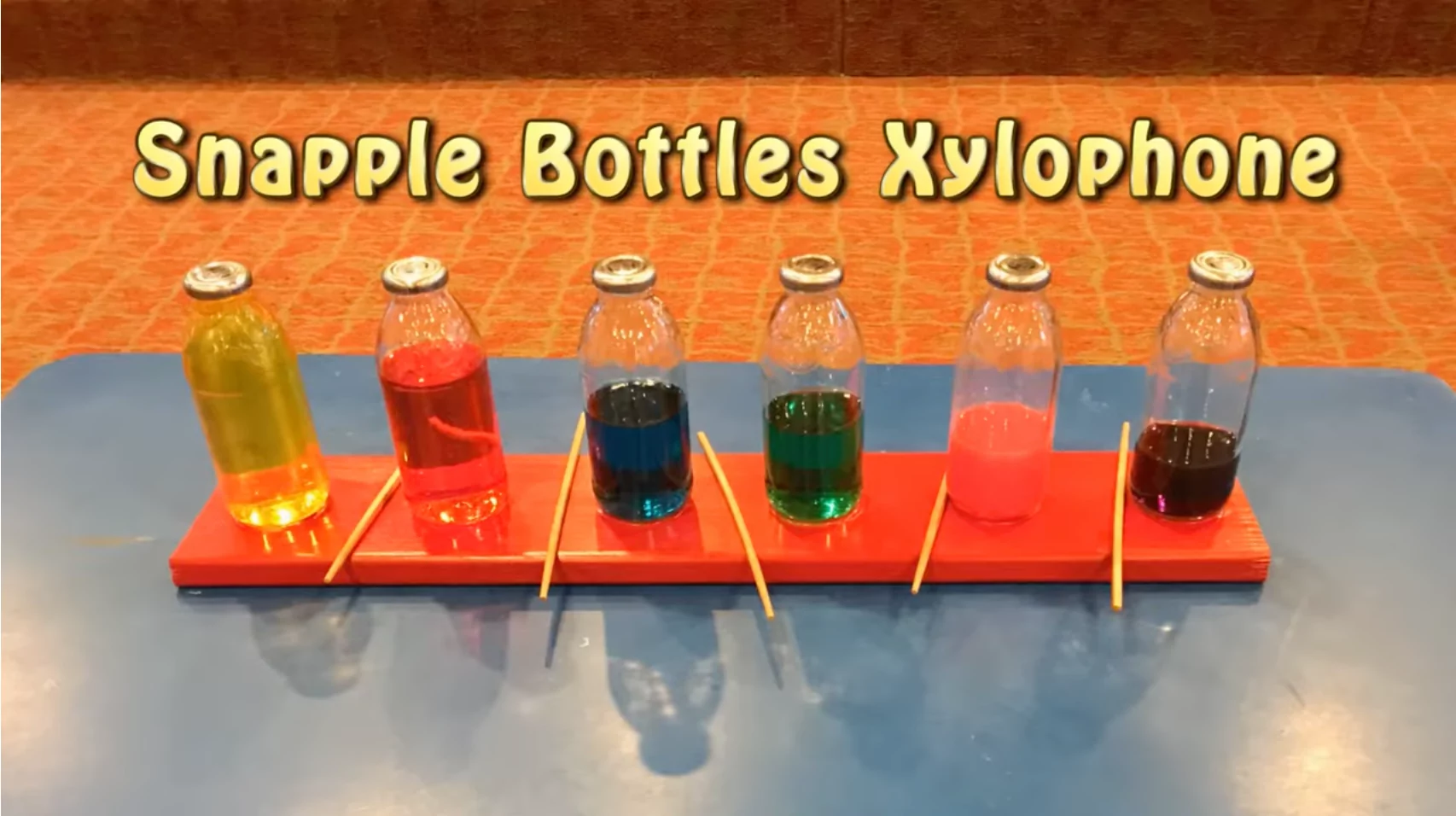As teachers and parents, we all know that kids learn best when they are engaged and motivated. Hands-on activities are one of the best ways to get kids excited about learning. Besides enhancing their cognitive skills these activities also get them moving which helps in developing their fine motors skills.
In this post, I compiled some of the best hands-on activities to use with your kids at home or at school to get them excited about learning science. From creating a volcanic eruption to making slime, these science experiments for kids teach important scientific concepts in an entertaining and interactive way including concepts like engineering, aerodynamics, chemical reactions, Newton’s laws of motion, buoyancy, polymers, sound waves, and more.
Each of these science experiments for kids is accompanied with a video tutorial that you can watch with your kids to see how the experiment was conducted and how it works.
1. Making a Cloud in a Jar
 |
| Screenshot from Sydney Water TV video |
- Fill the jar (about three quarters) with cold water
- Add some water and food colouring into the small cup and mix them together
- Pour shaving cream on top of the jar to make a fluffy cloud
- Use the syringe to suck the colored water
- Slowly add coloured water on top of the shaving foam cloud and watch it rain.
Watch Sydney Water TV video tutorial to learn more about this experiment.
2. Rainbow in a Glass
 |
| Photo credit: CSEH video |
This experiment is perfect to show kids how light refracts through a prism. With just a few items (like water, oil, honey, dish soap, rubbing alcohol, and food coloring), kids can create their own rainbow right before their eyes!
3. Aluminium Foil Boat
 |
| Photo credit: screenshot from Science Buddies video |
The aluminium foil boat experiment is an inventive twist on the classic aluminum foil boat science project. The objective of this experiment is to construct a boat out of aluminum foil such that it can carry a fixed number of pennies while a ball is dropped into the water from higher and higher heights, resulting in bigger and bigger waves. The goal of this experiment is to determine how much the boat can withstand before sinking.
Materials:
– Aluminum foil
– Pennies or other small coins
– Ball (such as a golf ball)
– Basin of water
– Measuring tape
Instructions:
1. Cut aluminum foil into a rectangle shape, ensuring that it is large enough to hold the desired amount of pennies and wide enough to provide stability.
2. Place the aluminum foil boat into the basin of water and fill with pennies, up to a fixed number.
3. Using the measuring tape, measure out different heights at which you will drop the ball from (start small and work your way up).
Watch this video tutorial created by Science Buddies to learn more about Aluminium Foil Boat experiment.
4. Sound science experiments for kids
In this video, Babble Dabble Do, provides four practical experiments to teach kids about sound waves and the science of acoustics.
The first sound experiment is called How Does Sound Move. Here is how it works: Pour water into a bowl, hit a tuning fork, then lower it into water. The vibrations of the fork create sound waves that transfer into water making it spray.
 |
| Photo credit Screenshot from Babble Dabble Do video |
The second experiment is called There Is a Drum in My Ear. Here is how it works: Cover a bowl with plastic wrap, sprinkle rice on plastic, hit a tuning fork, touch the plastic with the vibrating fork, the sound waves from the fork making the rice jump which is how our ear drums work. The third experiment is called Stringing it along and the fourth experiment is called Making it Louder.
Babble Dabble Do has this awesome video tutorial where you can see the four sound experiments in action.
5. Paper Airplane
Kids will love making their own paper airplane and exploring the principles of aerodynamics. With just a few simple folds, kids can make their own paper airplane and watch it soar! You can watch this video tutorial to see the experiment in action.
6. The Magical Floating Water Experiment
The floating water experiment is a fun and educational activity for kids to explore the science of buoyancy. In this experiment, kids will mix different amounts of salt in warm coloured water to test if they can make the water float on water.
 |
| Photo credit:screenshot from RTÉjr video |
After gathering all supplies, pour your warm coloured water into the long cylinder. Then measure out small amounts of salt and add it to each colour separately. Stir each solution until fully mixed then use a funnel to carefully transfer each solution back into the cylinder.
7. The Oxygen and Fire Experiment
In the Oxygen and Fire experiment, Amy and Zoe sought to find out what happens when a candle’s oxygen supply is removed. They found that when the oxygen was taken away, the flame of the candle quickly extinguished.
 |
| Photo credit:screenshot from RTÉjr video |
8. Walking Water Science Experiment
The Walking Water Science Experiment teaches children about the process of capillary action, which is how plants and trees are able to draw water from the ground. This fun and educational experiment is easy to do at home using everyday household items.
 |
| Photo credit: Screenshot from Ryan’s World video |
9. Funny Elephant Toothpaste
The Funny Elephant Toothpaste experiment is a fun and educational science experiment that results in an eruption of foam. It involves the decomposition of hydrogen peroxide, with yeast or potassium iodide acting as a catalyst to break it down into oxygen and water. The oxygen and water then mix with the dish soap to create foam.
 |
| Photo credit: screenshot from DIY bama video |
10. How to Make a Lava Lamp at Home
To make a lava lamp at home you will need vinegar, vegetable oil, baking soda, food colouring, and a clear plastic or glass bottle. First, add 2 teaspoons of baking soda then fill the bottle halfway with vegetable oil.
 |
| Photo credit Screenshot from Creative SL video |
11. Making Homemade Rockets
Making a homemade rocket with vinegar and baking soda is a great STEM activity that teaches children about various science concepts including aerodynamics, Newton’s laws of motion, chemical reactions, engineering and fine motor skills. Make sure you do this experiment outside.
 |
| Credit: STEM Little Explorer video |
To make the rocket, all you need is a bottle, some vinegar, and baking soda. Start by pouring the vinegar into the bottle – this will be used as fuel for the rocket. Then, add baking soda to the bottle and quickly put the lid on. The reaction between the vinegar and baking soda will create a gas that will propel the rocket.
Watch this video by STEM Little Explorers to learn more about how to make a homemade rocket with vinegar and baking soda.
12. Dancing Raisins Science Experiment
Dancing raisins is a fun science experiment that is sure to fascinate kids of all ages as they watch raisins move up and down in a glass of soda. This experiment teaches children about the effects of carbon dioxide gas on buoyancy.
To perform this experiment, you will need raisins, a glass of clear soda and a teaspoon. Start by pouring the soda into the glass and then adding the raisins. The raisins will immediately sink to the bottom. Then take the teaspoon and stir it in the soda for 10-15 seconds. This will cause carbon dioxide gas bubbles to form around the raisins.
 |
| Credit:screenshot for this video |
13. Creating a Volcanic Eruption
 |
| Credit: Ryan’s World video |
This experiment is great to show kids how a volcanic eruption works and the science behind it. Through a combination of baking soda and vinegar, create an explosion that demonstrates what happens when pressure builds up in a volcano.
14. Making Slime
Kids will love creating their own slime and watching as it takes on different shapes and textures. This experiment teaches kids about the properties of polymers and allows them to explore matter in a fun way.
 |
| Credit: screenshot from Matt’s video |
15. Milk Bottle Xylophone
Kids can make their own musical instrument with this experiment! It requires a few empty milk bottles, water, and some coins or marbles. By filling the bottles with different levels of water, kids can create a range of tones as they drop the coins into the bottles. This experiment is great for teaching kids about sound waves and the science of music.
 |
| Credit: Kayli Joseph video |






